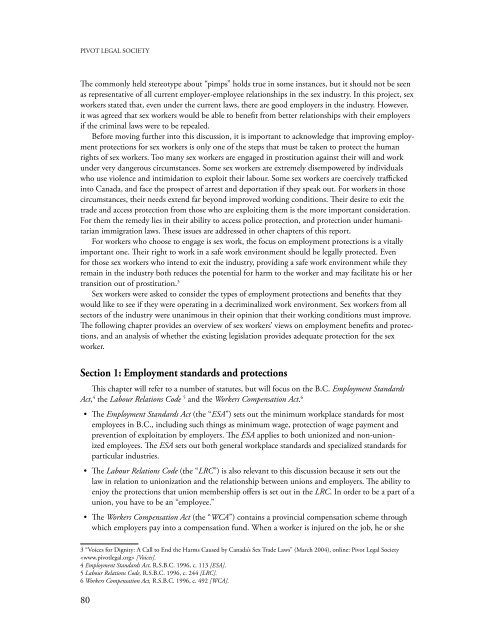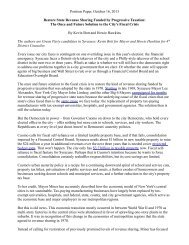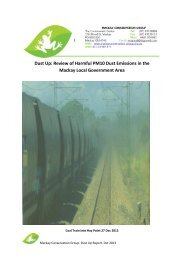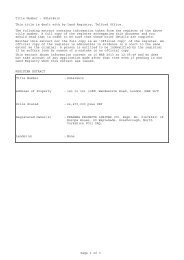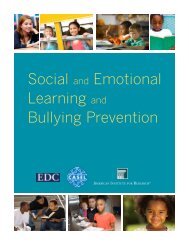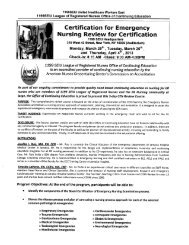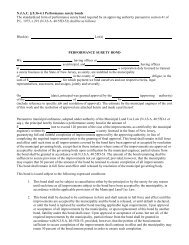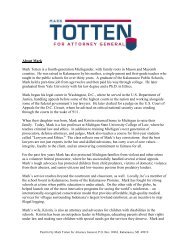Beyond Decriminalization: Sex-work, Human Rights and a New ...
Beyond Decriminalization: Sex-work, Human Rights and a New ...
Beyond Decriminalization: Sex-work, Human Rights and a New ...
- No tags were found...
Create successful ePaper yourself
Turn your PDF publications into a flip-book with our unique Google optimized e-Paper software.
PIVOT LEGAL SOCIETYThe commonly held stereotype about “pimps” holds true in some instances, but it should not be seenas representative of all current employer-employee relationships in the sex industry. In this project, sex<strong>work</strong>ers stated that, even under the current laws, there are good employers in the industry. However,it was agreed that sex <strong>work</strong>ers would be able to benefit from better relationships with their employersif the criminal laws were to be repealed.Before moving further into this discussion, it is important to acknowledge that improving employmentprotections for sex <strong>work</strong>ers is only one of the steps that must be taken to protect the humanrights of sex <strong>work</strong>ers. Too many sex <strong>work</strong>ers are engaged in prostitution against their will <strong>and</strong> <strong>work</strong>under very dangerous circumstances. Some sex <strong>work</strong>ers are extremely disempowered by individualswho use violence <strong>and</strong> intimidation to exploit their labour. Some sex <strong>work</strong>ers are coercively traffickedinto Canada, <strong>and</strong> face the prospect of arrest <strong>and</strong> deportation if they speak out. For <strong>work</strong>ers in thosecircumstances, their needs extend far beyond improved <strong>work</strong>ing conditions. Their desire to exit thetrade <strong>and</strong> access protection from those who are exploiting them is the more important consideration.For them the remedy lies in their ability to access police protection, <strong>and</strong> protection under humanitarianimmigration laws. These issues are addressed in other chapters of this report.For <strong>work</strong>ers who choose to engage is sex <strong>work</strong>, the focus on employment protections is a vitallyimportant one. Their right to <strong>work</strong> in a safe <strong>work</strong> environment should be legally protected. Evenfor those sex <strong>work</strong>ers who intend to exit the industry, providing a safe <strong>work</strong> environment while theyremain in the industry both reduces the potential for harm to the <strong>work</strong>er <strong>and</strong> may facilitate his or hertransition out of prostitution. <strong>Sex</strong> <strong>work</strong>ers were asked to consider the types of employment protections <strong>and</strong> benefits that theywould like to see if they were operating in a decriminalized <strong>work</strong> environment. <strong>Sex</strong> <strong>work</strong>ers from allsectors of the industry were unanimous in their opinion that their <strong>work</strong>ing conditions must improve.The following chapter provides an overview of sex <strong>work</strong>ers’ views on employment benefits <strong>and</strong> protections,<strong>and</strong> an analysis of whether the existing legislation provides adequate protection for the sex<strong>work</strong>er.Section 1: Employment st<strong>and</strong>ards <strong>and</strong> protectionsThis chapter will refer to a number of statutes, but will focus on the B.C. Employment St<strong>and</strong>ardsAct, the Labour Relations Code <strong>and</strong> the Workers Compensation Act. • The Employment St<strong>and</strong>ards Act (the “ESA”) sets out the minimum <strong>work</strong>place st<strong>and</strong>ards for mostemployees in B.C., including such things as minimum wage, protection of wage payment <strong>and</strong>prevention of exploitation by employers. The ESA applies to both unionized <strong>and</strong> non-unionizedemployees. The ESA sets out both general <strong>work</strong>place st<strong>and</strong>ards <strong>and</strong> specialized st<strong>and</strong>ards forparticular industries.• The Labour Relations Code (the “LRC”) is also relevant to this discussion because it sets out thelaw in relation to unionization <strong>and</strong> the relationship between unions <strong>and</strong> employers. The ability toenjoy the protections that union membership offers is set out in the LRC. In order to be a part of aunion, you have to be an “employee.”• The Workers Compensation Act (the “WCA”) contains a provincial compensation scheme throughwhich employers pay into a compensation fund. When a <strong>work</strong>er is injured on the job, he or she “Voices for Dignity: A Call to End the Harms Caused by Canada’s <strong>Sex</strong> Trade Laws” (March 2004), online: Pivot Legal Society [Voices]. Employment St<strong>and</strong>ards Act, R.S.B.C. 1996, c. 113 [ESA]. Labour Relations Code, R.S.B.C. 1996, c. 244 [LRC]. Workers Compensation Act, R.S.B.C. 1996, c. 492 [WCA].80


